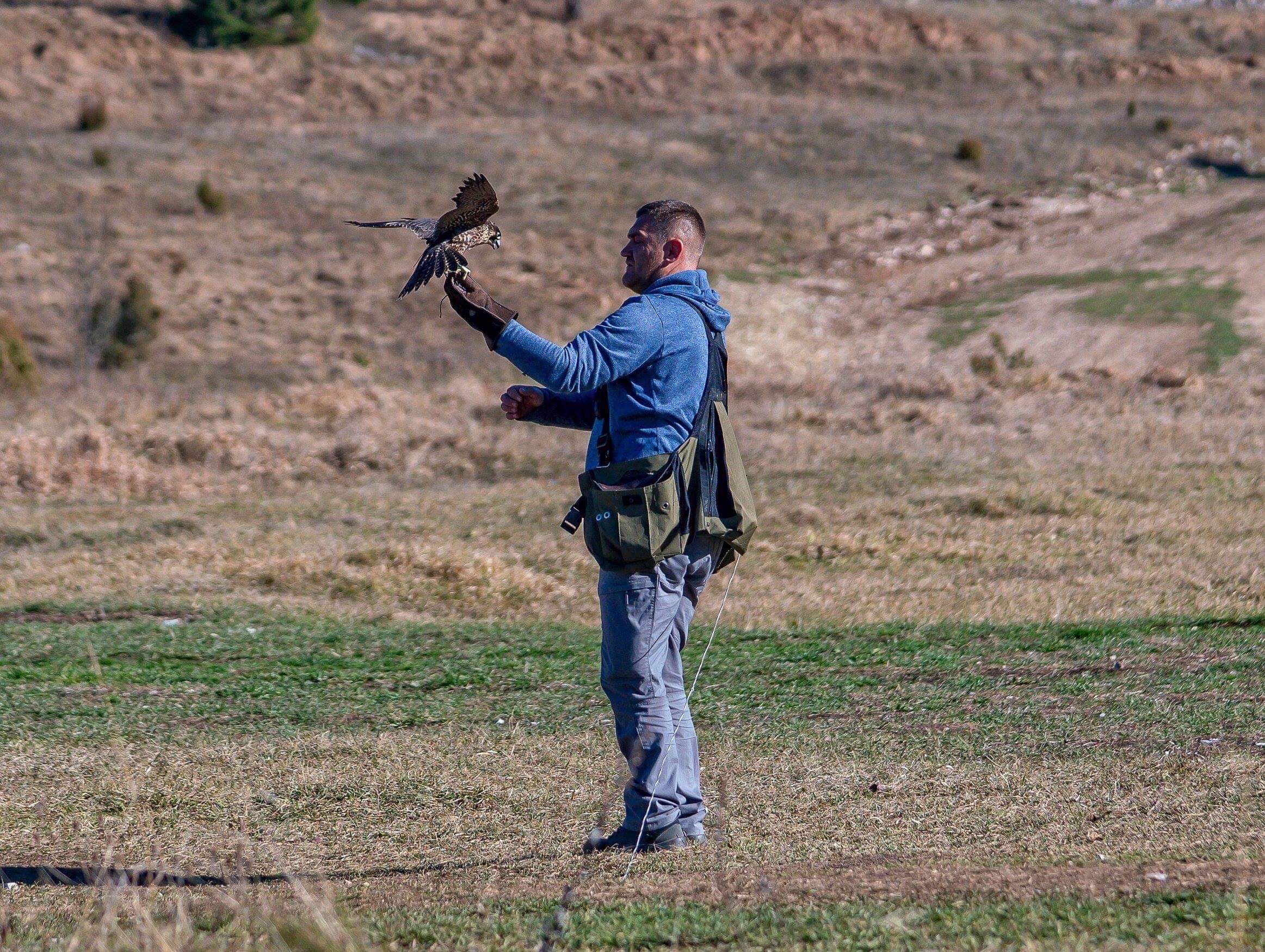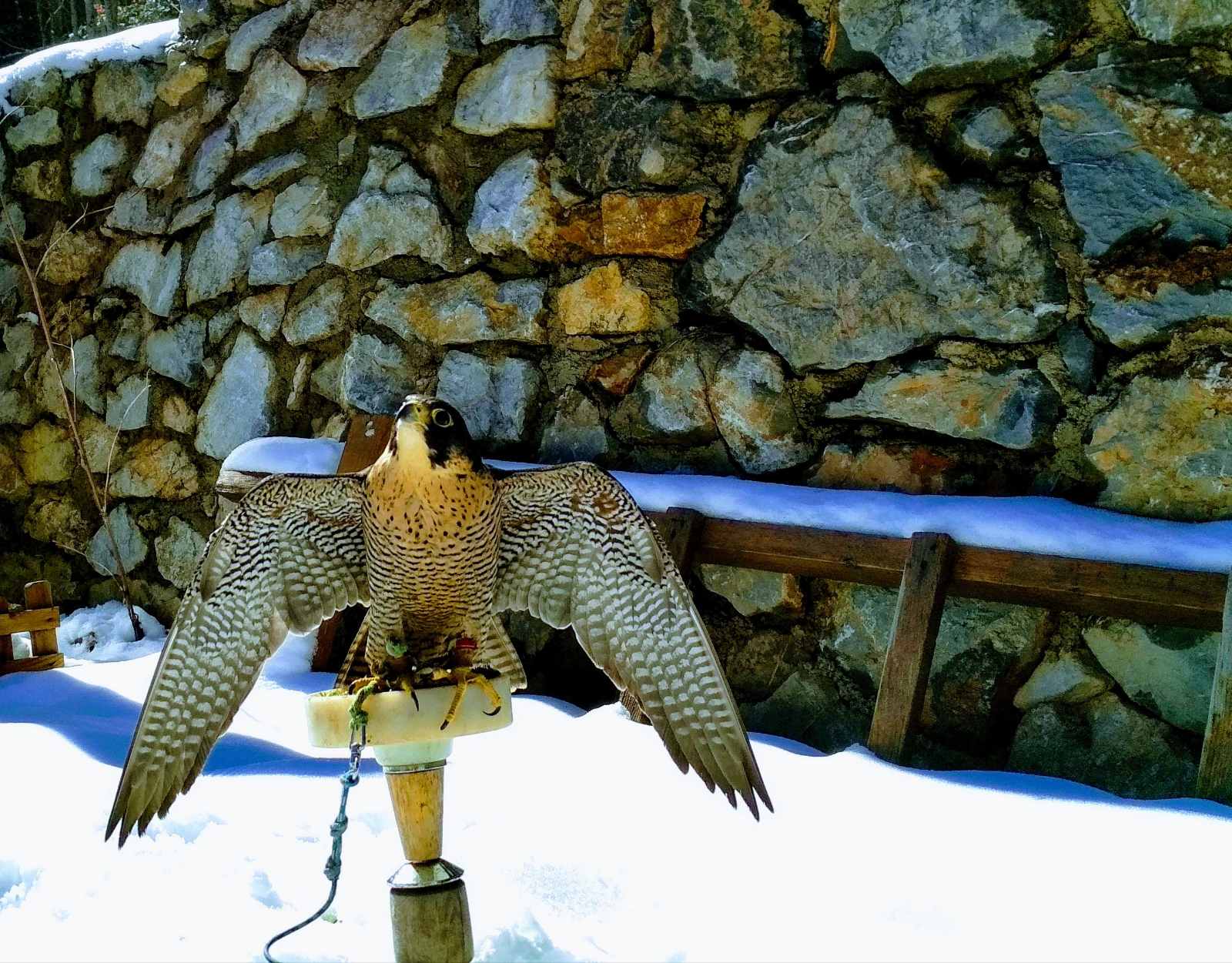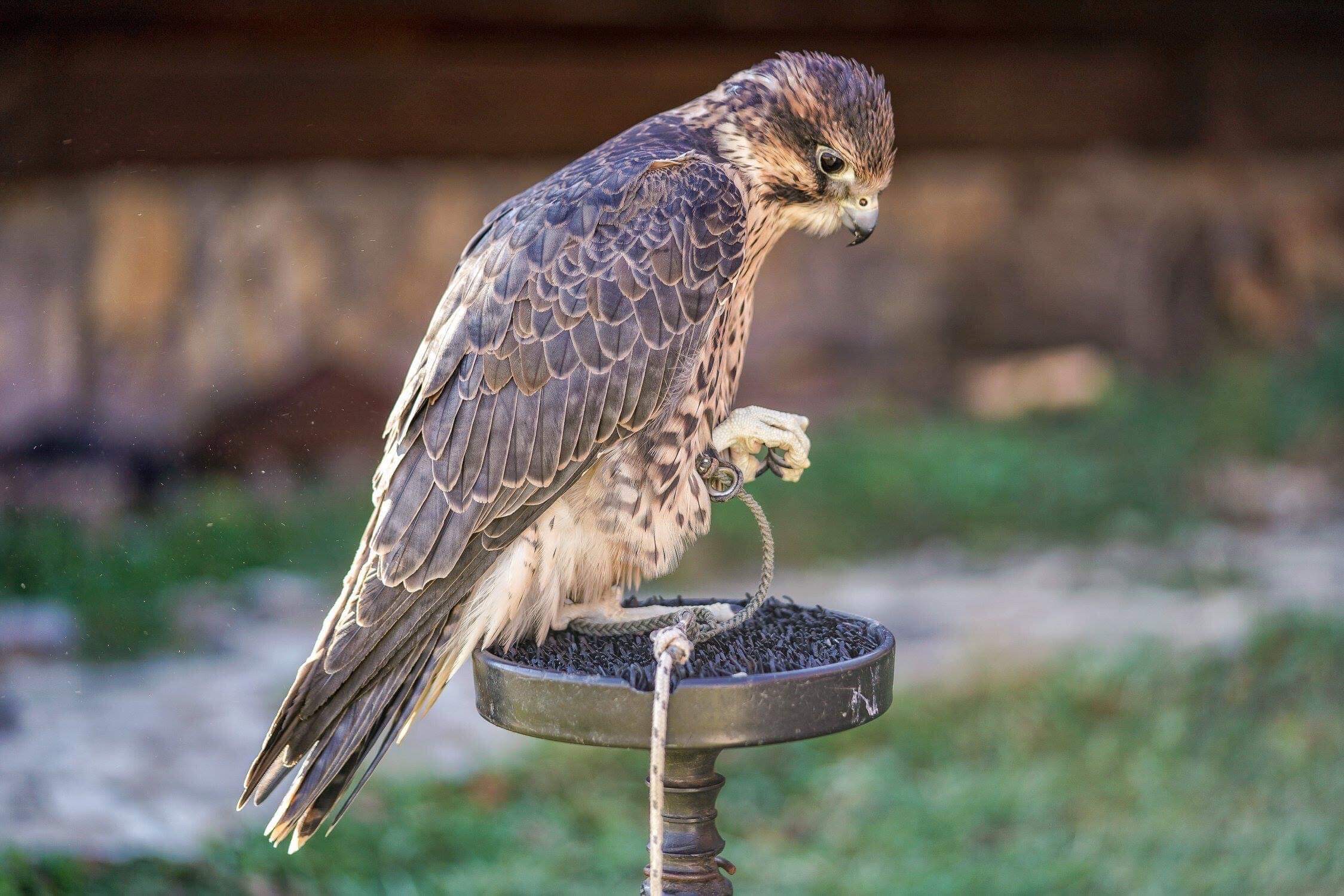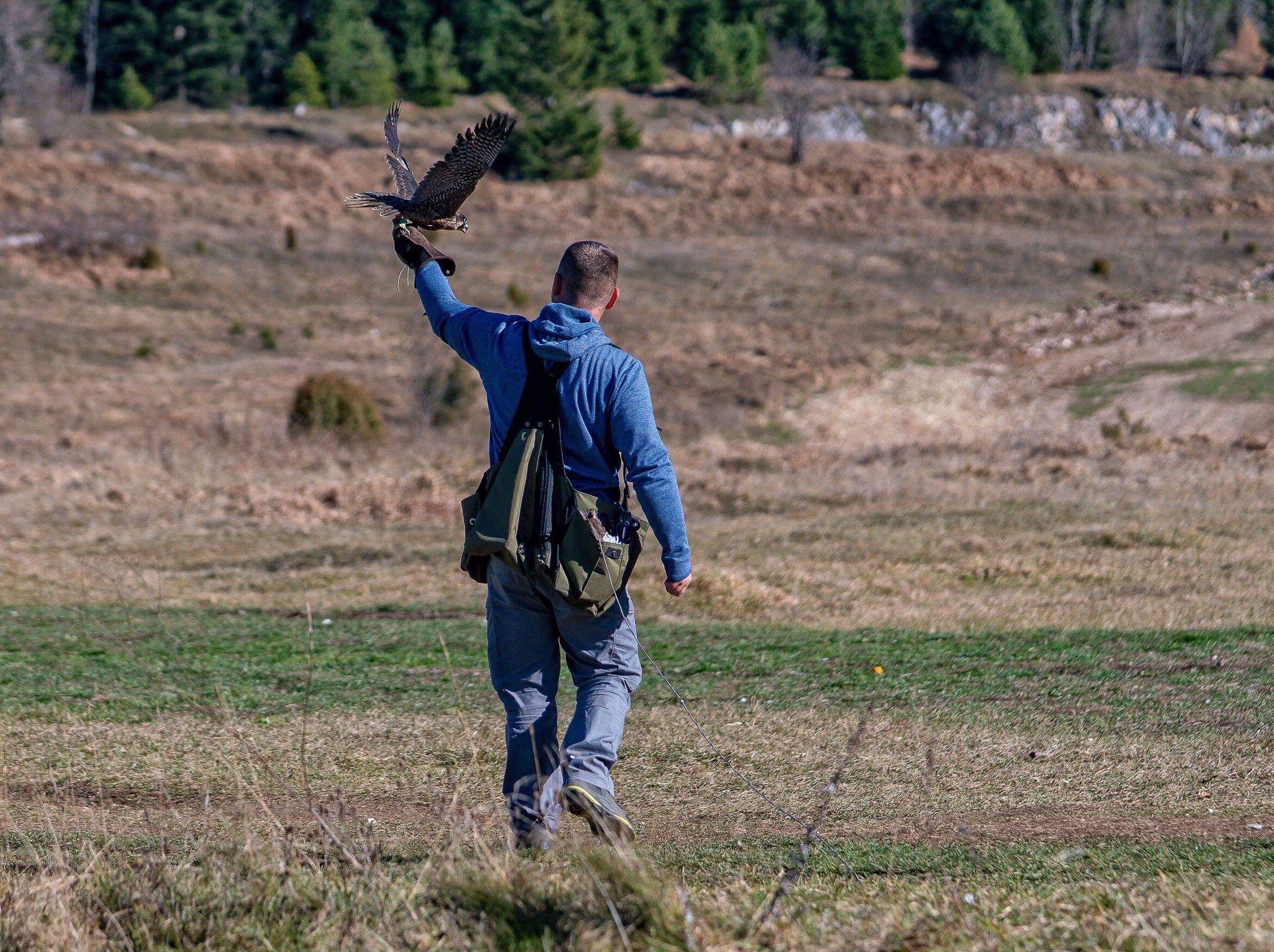One of the fastest living creatures in the world – the peregrine falcon, can be found on Bjelašnica, at Babin Dol. This is where Kaled Idrizović, the president and founder of the Association of B&H Falconers, keeps them.

Author: Semra Hodžić
He is not sure himself how he came to be in falconry. People say that you’re born with it, so he feels that it was determined by fate. He adapted his life to the birds – a male Central European peregrine falcon and a female saker falcon. He would not have been able to do any of that without the great support of his family. He says that you cannot just go somewhere and leave a bird with someone, so the rest of his family – from youngest to oldest must know all about the birds’ needs. There are specific instructions related to their feeding, and just one step on the bird stand can go wrong if you have not adjusted it well. Each and every feather must be healthy, and the claws must be sharp. Falcons molt once per year, from March to September, when they change their feathers and they must not fly until this natural process is complete.
The fastest living creature on the planet

Kaled describes the peregrine falcon as a bird that lives and nests along Central Europe, and is on the red list of endangered animal species in the world. People chase and kill them when they are hunting smaller birds – thrushes, blackbirds, pigeons… They are predators by nature, serving as “natural cleaners” and any action drains their energy, which is why we cannot often see them flying around like other birds. They are the fastest living creature on the planet, reaching a speed of 340 km/h upon descent, and they have the best eyesight, which is ten times better than the eyesight of humans.
Falconers like Kaled place GPS systems on birds (weighing 7 grams), and they serve to track their flight and hunting activities. These systems represent the only novelty in the world of falconry, as falconers like to strictly preserve old tradition. The GPS is also useful for training. During training, which is most often held at one of the numerous fields of Bjelašnica, they have recorded them flying at 240 km/h at a height of 400 meters. When he releases the bird to fly, he says it is ideal for it to be circling 80 to 100 meters above his head. There is also a dog at the training, Kaled’s is called Jackie, who hunts along with the falcon in order to chase game. The falcon then follows the dog. Birds have no names, as they do not respond to them like dogs.
Keeping falcons

The birds that Kaled keeps are called imprints, i.e. they are hand-fed birds. Imprints are bred so that semen can be extracted from the bird and used for artificial insemination. All birds must be ringed and bred in regular conditions. If the bird is intended for hunting, falconers allow its parents raise it so that it can be as free and wild as the ones in nature. It is prohibited to take them away from nature, as you can buy a bird anywhere in the world from a breeding pen.
Going hunting
Falconry is a hunting discipline, which means you must have passed a falconry exam in order to be a falconer and you also have to pass a hunting exam in order to hunt. Kaled had training to become a falconer eight years ago, with one of the most well-known regional falconers, Stjepan Bašić, who was also his mentor for passing the exam in Serbia, given that it is not possible to take the exam in B&H.
The codex of falconry calls for proper hunting. It states that not every bird is like a falcon, falcons are only those birds that hunt for prey that men could actually use for food.

Kaled goes hunting across B&H with the birds that he owns, but at first, he was faced with problems due to the implementation of the CITES convention. At the Association of Falconers, they have implemented it fully. He also goes to traditional hunting gatherings outside of B&H – in Karlovac, Novo Mjesto etc., which he sees as an opportunity to socialize and exchange ideas with other falconers.
Falconers from the association are permitted to legally import falcons. Last year, association member Adis Ahmetspahić managed to breed a peregrine falcon under regular conditions, which makes this the first bred falcon in B&H. This year, Kaled will succeed at breeding a saker falcon, which was first imported into B&H. He says that it is a difficult process until the birds become productive.
Falconry Center
In the village of Ostojići on Bjelašnica, there are plans to soon start a Falconry Center with a School of Falconry, where visitors will be able to get to know the history of falconry, and try it out for themselves.
Falconry in the past
Falconry used to be an industry in B&H. There were institutions that dealt with falconry, which the Austro-Hungarians found when they arrived here. Falcons from B&H used to be taken to the Vatican, the Republic of Ragusa, as a gift to emperors etc. In the rich history of falconry, it is recorded that Drežnica near Mostar used to be a breeding pen.
This ancient noble skill was declared to be protected intangible cultural world heritage by the UNESCO.